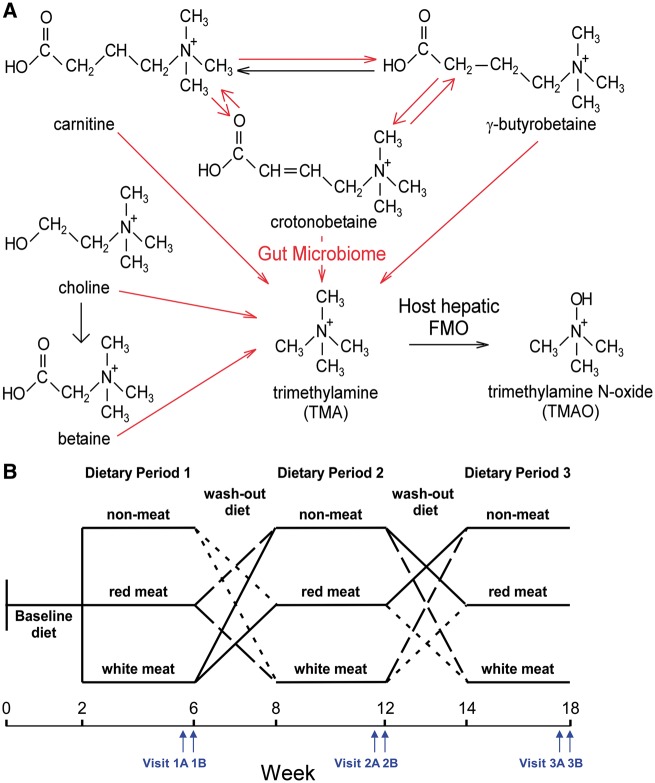Figure 1.
Gut microbial and host pathways in trimethylamine N-oxide metabolism and study design. (A) Trimethylamine containing nutrients that can generate trimethylamine N-oxide via an initial gut microbiota-dependent step, followed by host hepatic flavin monooxygenase conversion to generate trimethylamine N-oxide. Arrows in black represent transformations performed by the host, and arrows in red represent reactions performed by gut microbes. (B) Overall study design. After consumption of a 2-week baseline diet, subjects were randomly assigned to either a high-fat or low-fat arm. Subjects in each arm underwent in cross-over design three sequential 4-week isocaloric investigational diet where protein source was derived from either red meat, white meat, or non-meat sources, with 2-week wash-out diets between each intervention dietary period, as described under Methods section. During the 4th week of each diet challenge (typically towards end), blood was collected on two separate days (Visit A and Visit B). Participants within each experimental diet arm were randomly assigned to either high- or low-saturated fat containing meal plans, as described in the text.

